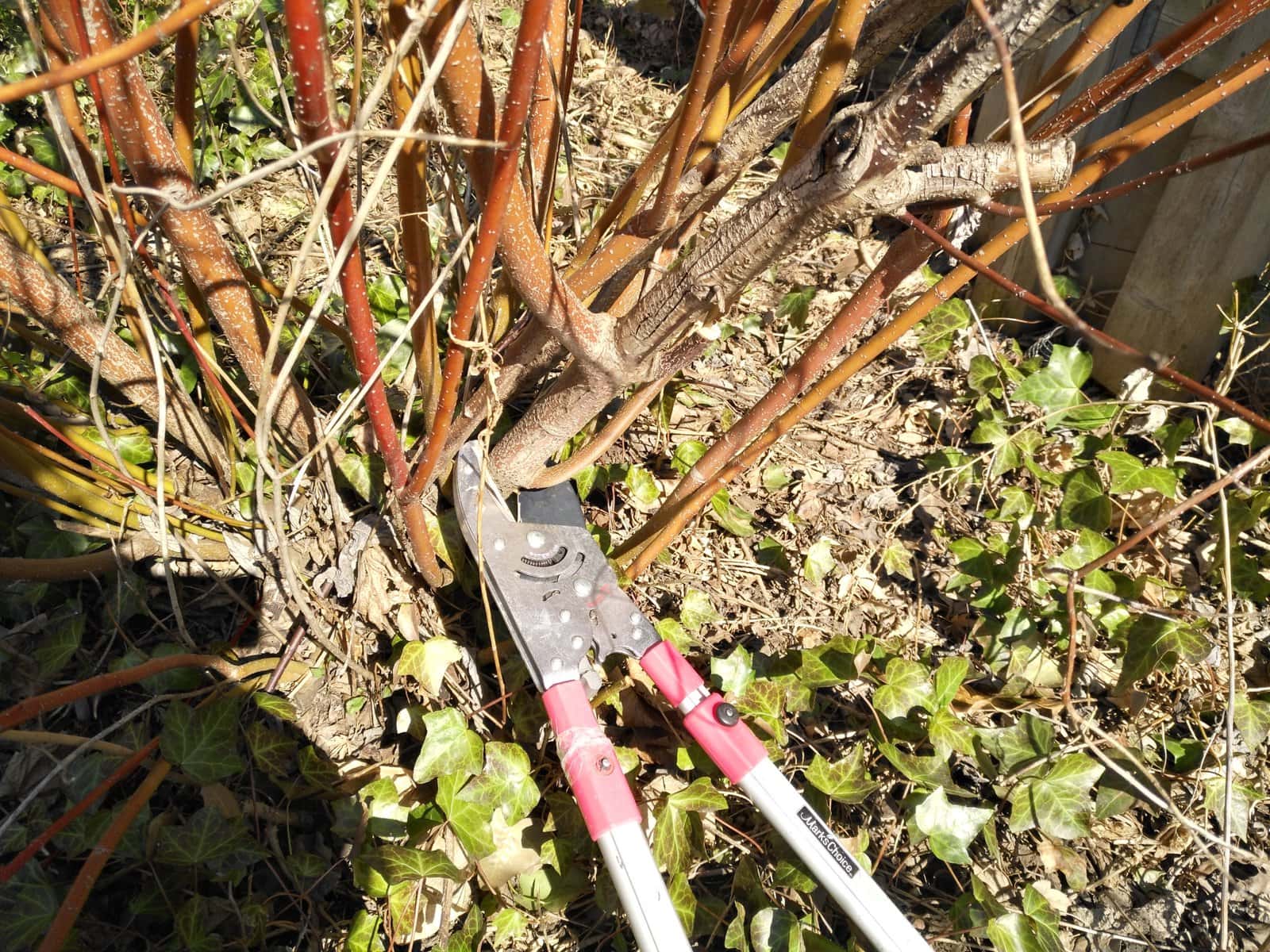In last week’s article, I explained why it is that we prune deciduous shrubs from late winter to early spring, which I have summarized in the next paragraph.
In this week’s article, I will be going through some basic tips to help take away the mystery of pruning.
In general, the best time to prune any deciduous woody plant is just before the new growth starts in spring (the late dormant period: March to mid-April).
Pruning at other times can rob the plant of stored food and energy. It may also mean a loss of flowers or fruit.
With that said all rules have some exceptions. Here are those exceptions:
• Any early spring flowering plants (plants that bloom off old wood) should be pruned immediately after flowering and before leaves unfold.
Some examples of these plants are magnolia, forsythia, wisteria, serviceberry, lilac, quince, bridal wreath spirea and most viburnums.
• Trees such as maples (including Japanese maples), flowering dogwoods, birch and elm will bleed if pruned in late winter or early spring.
A better time to prune these trees would be mid-summer.
Let’s be honest … how many of your shrubs have the same shape after you have pruned them?
Chances are once the plants have been in your garden for a couple of years, they all start looking the same – like ice cream cones.
The top of the shrubs get wider and wider while the base of the plants remains bare with no leaves.
Many people, when pruning deciduous trees and shrubs, will just shear back the top of the plant to reduce the overall height of the plant, but this is only one part of proper pruning techniques.
If this is you, you need to take another look at the plants and follow these three steps.
Step 1: When pruning any shrub or tree, you always start with the 3 Ds of pruning. This means that you prune out any dead, diseased or damaged branches first.
Step 2: Next, remove any branches that closely cross with other branches or that cross through the middle of the plant. You want to have branches that come from the center of the plant and head outward.
Step 3: When pruning any plant, it is always good to know what your goal is and that will help you determine how to best prune your shrub.
There are four main goals of pruning that you should consider before you begin:
Goal 1: Control the size of the plant
The best way to control the size of a plant is by natural pruning, which means that you are making selective cuts to thin or reduce the overall size of the plant.
The last thing that you want to do is to take your electric shears and give your shrub a crew cut: not just shearing off the tips but removing branches with secateurs or loppers.
When you only shear back the tips, your shrubs will become very wide at the top because of this increased branching, giving your shrub an ice cream cone-like appearance.
When the top is so wide, it stops the sunlight from hitting the base of the plant and you are left with a plant that is bare at the base.
When pruning is completed, it should still have its natural form.
Goal 2: Increase the amount of flowers and fruit
Proper pruning will aid in the production of flowers.
Most flowers are produced on the tips of the stems, therefore, the more tips that there are, the more flowers you have, and the more fruit will be produced.
To accomplish this goal, you cut back the stem tips, stimulating the side branches and developing more tips for the flowers to form on.
Just remember that the more flowers that a plant produces, the smaller the flowers will be.
Goal 3: Maintain a certain shape
One of the goals of pruning might be to maintain a certain shape such as a hedge, a globe form, or specimen plants like spirals and pompons.
This is best achieved by shearing. With shearing you are just removing new tip growth, creating a full dense look.
Even though electric shears make the job easier, hand shears make a much nicer job of things.
Electric shears just tear the plant tissue while hand shears make a cleaner cut.
When the plant tissue is torn there is more die back at the tips giving the sheared shrub a brownish tinge.
Always make sure that any pruning tool is sharp and clean before using it to prevent this from happening.
Goal 4: Rejuvenate an older shrub
We tend to let shrubs grow year after year and once they become too large, we hack (not a proper horticultural term) them back hoping that they will survive and become beautiful again.
It is much easier to do a bit of pruning every year than to wait until the shrub is out of control.
The best way to rejuvenate an old flowering shrub is to do so over a three-year period.
This can be achieved by removing one-third of the oldest growth every year right back to the base, which will then stimulate growth to come from lower down.
In three years, you will have completely rejuvenated the entire shrub.
Keep these tips and goals in mind as you tackle your garden this spring and you will be a cut above the rest.
Joanne Young is a Niagara-on-the-Lake garden expert and coach. See her website at joanneyoung.ca











